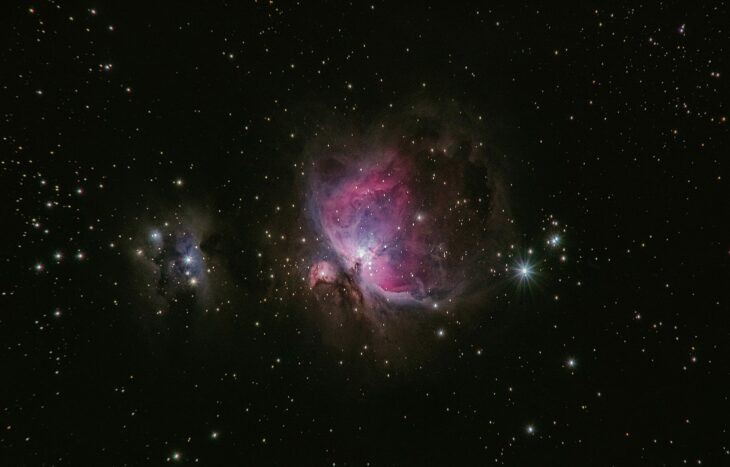A team of astronomers recently decoded the genealogy of a pair of neutron stars that merged in a dramatic explosion. Neutron stars are the remnants of powerful supernova explosions, which happen at the end of a massive star’s life. When these stars merge with each other, the resulting explosion is called a kilonova.
Kilonovae are responsible for creating many heavy elements like gold and platinum, and are up to 100 times fainter than supernovae. As neutron stars spiral towards each other, they distort the spacetime around them depending on their mass, and scientists can detect this distortion from gravitational waves using detectors on Earth. When the stars finally merge, the resulting explosion is also very bright. Thus, scientists can study kilonova explosions with either gravitational waves or light.
A team of researchers led by Dr. Heloise Stevance, formerly of the University of Auckland, recently studied a kilonova explosion known as GW170817. This event marked the first time astronomers were able to view an object in space using both gravitational waves and visible light at the same time.
Stevance and colleagues leveraged both of these signals to find out more about the star system that created the explosion, called its progenitor. They wanted to know what the masses of the stars were before the explosion, and how long it took them to merge. Learning about progenitors is often tricky, since when astronomers see an explosion in space, they can typically only see the aftermath. It’s like trying to figure out the makes and models of crashed cars from only the wreckage.
To create a family tree for a pair of stars, the team had to understand the characteristics of the galaxy where the stars had lived, since no two galaxies are the same. Stars in galaxies are created in one or more distinct groups, referred to as populations, each born at a different time.
Young populations of stars are dominated by the most hot and massive stars, and look blue in visible light. The hot, blue stars die over time, leaving less massive, cooler red stars behind. This means older populations of stars look redder in visible light. Populations of stars also have different chemical compositions depending on how old they are.
To find the progenitor of the GW170817 kilonova, the team first had to understand how many stellar populations were in the galaxy where the progenitor lived, called the host galaxy, and their chemical compositions. They compared the combined light of the galaxy to models of different stellar populations with known ages and chemical compositions, to find the model that best matched the observations. They found the host galaxy likely had two different stellar populations, one that was over 5 billion years old, and one that was around a billion years old.
To complete the family tree, the team used these two stellar populations to compute a second set of models. They started with a distribution of newborn stars of different sizes, ranging from many times smaller than our Sun up to 300 times the mass of our Sun, or 300 solar masses. The scientists allowed the model to go forward in time, and computed how the stars’ physics would change along the way.
To find kilonovae, they looked for pairs of stars in their models that got close enough to merge. Sometimes gravitational attraction will bring stars close enough to merge very slowly, but most stars are born too far apart for us to observe this type of merger. Other times the outer gas layers of two stars expand until they occupy the same space. This gas exerts a frictional force on the stars, slowing them down and shrinking their orbit, so they merge faster.
Once the team found sets of stars that merged in their models, they focused on ones that had stellar masses close to those of GW170817, and took a similar amount of time to merge. They concluded the larger star in GW170817 likely weighed between 13-24 solar masses, and the smaller one weighed between 10-12 solar masses. They also found the stars went through multiple short common envelope phases when they merged, unlike the single phase scientists had previously found in similar events.
Stevance and colleagues were able to identify the progenitors of this massive kilonova explosion using a unique combination of gravitational waves and visible light for the first time. They suggested similar tools will help astronomers study the origins of any future kilonovae discovered when the LIGO/VIRGO gravitational wave detector is reactivated later this year.


